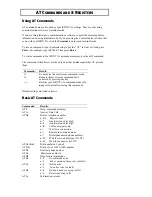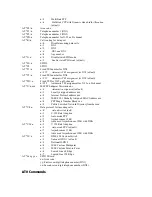
G
LOSSARY
AO/DI
Always On/Dynamic ISDN. Takes advantage of your ISDN line’s
signaling channel (D-channel) to conduct low-bandwidth operations.
Async-Sync PPP Conversion
Asynchronous to synchronous PPP conversion. Converts asynchronous
PPP into synchronous (HDLC-based) PPP that can be transported in
ISDN B-channels to communications servers that have integrated ISDN
BRI, PRI, or T1 access lines.
AT commands
Attention codes. Used to configure and operate your ISDN TA. These
commands can be sent either automatically or manually through your
communications software.
Autobaud
Automatic baud rate detection. Automatically detects the baud rate of
your computer’s serial port.
AutoSPID
If your telephone company supports this feature, AutoSPID
automatically downloads telephone number and Service Profile ID
information from the phone company switch.
BACP/BAP
Bandwidth Allocation Control Protocol and Bandwidth Allocation
Protocol. Negotiate bandwidth allocation with the server your ISDN
TA is connected to.
B-channel
Bearer channel. In ISDN communications, a B-channel transmits data
and voice traffic at a rate of up to 64 Kbps.
BRI
Basic Rate Interface. One of two access methods to the ISDN. Each
BRI consists of two 64 Kbps B-channels and one 16 Kbps D-channel
for each ISDN line.
Call Drop
A supplementary voice feature that allows you to remove the last caller
added to a conference.
Call Routing
Allows you to associate a specific telephone number to a specified
analog port.
CHAP
Challenge Handshake Authentication Protocol. A PPP authentication
protocols. An authentication protocol requests information to verify a
valid user. CHAP uses encryption and may repeatedly request
verification of the identity of the user any time after link establishment.
COM port








































